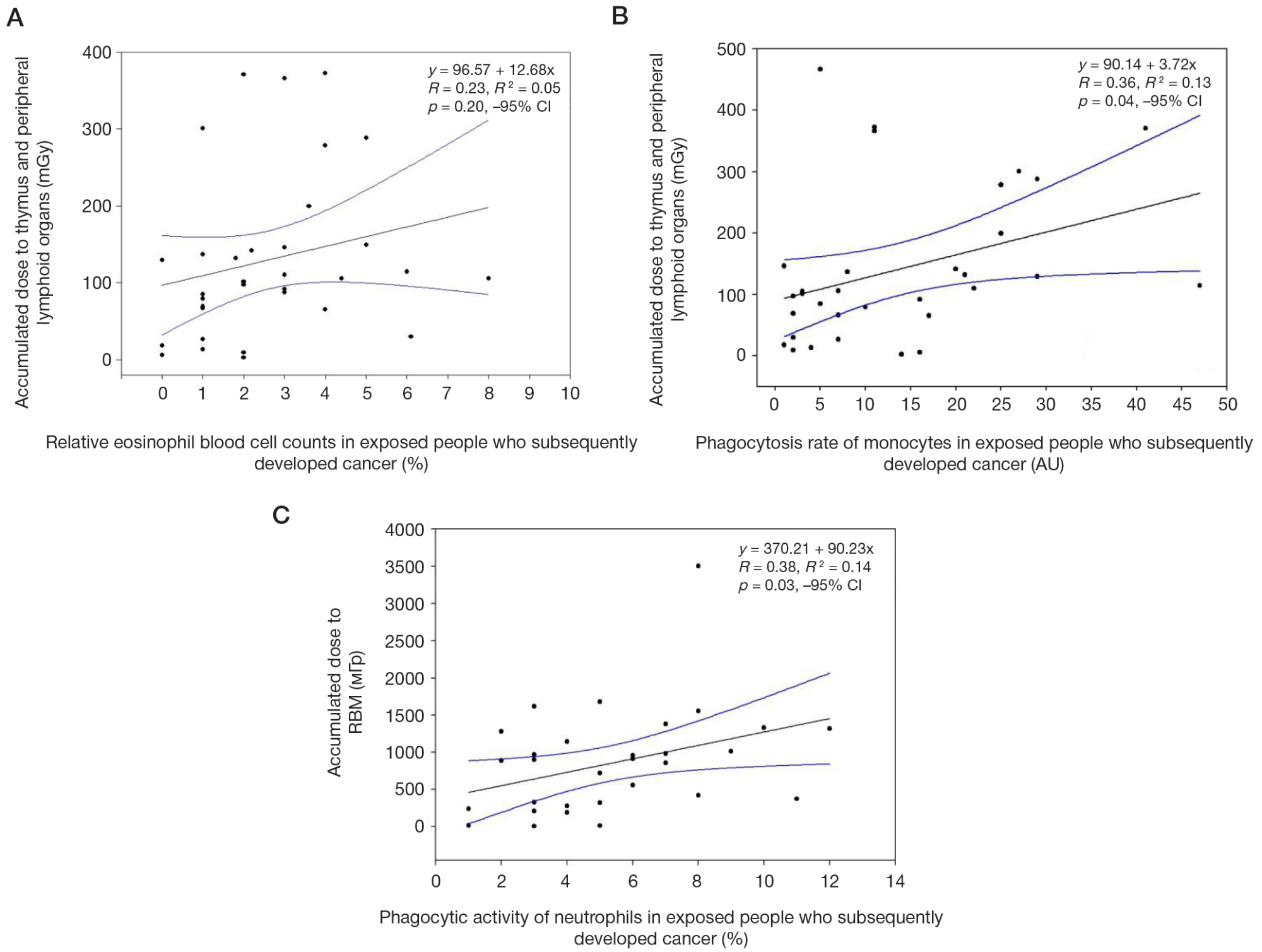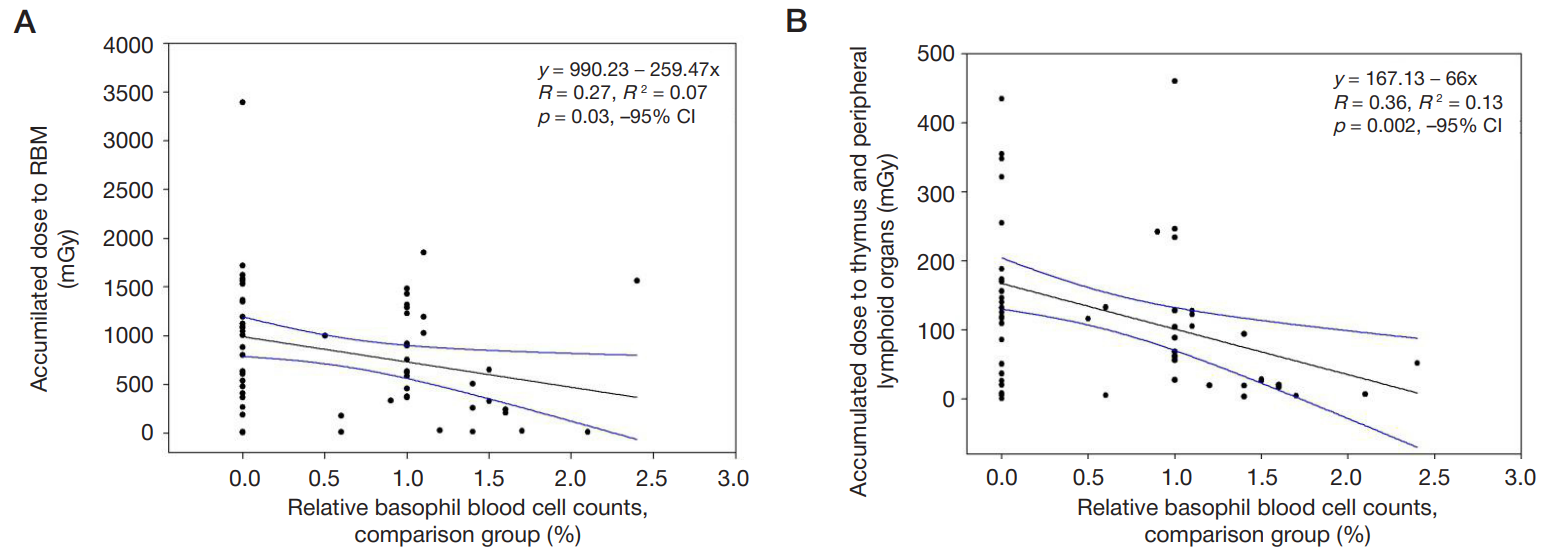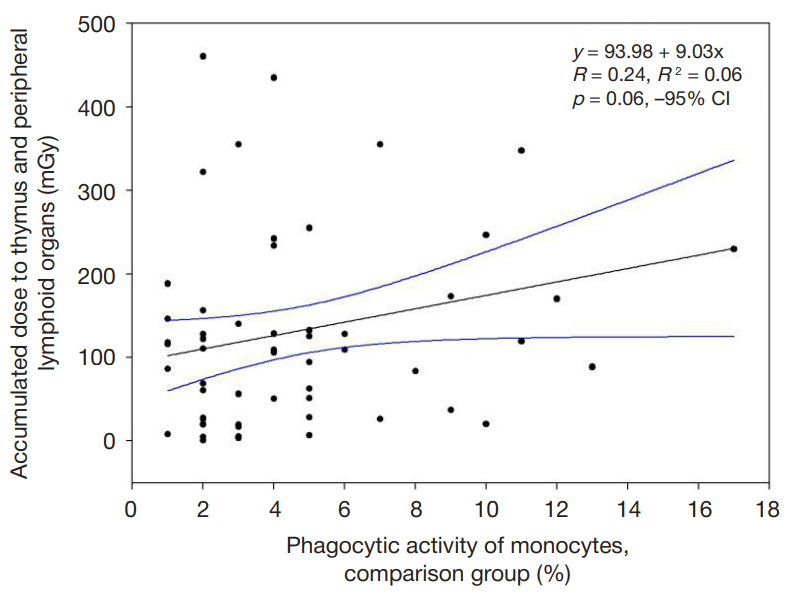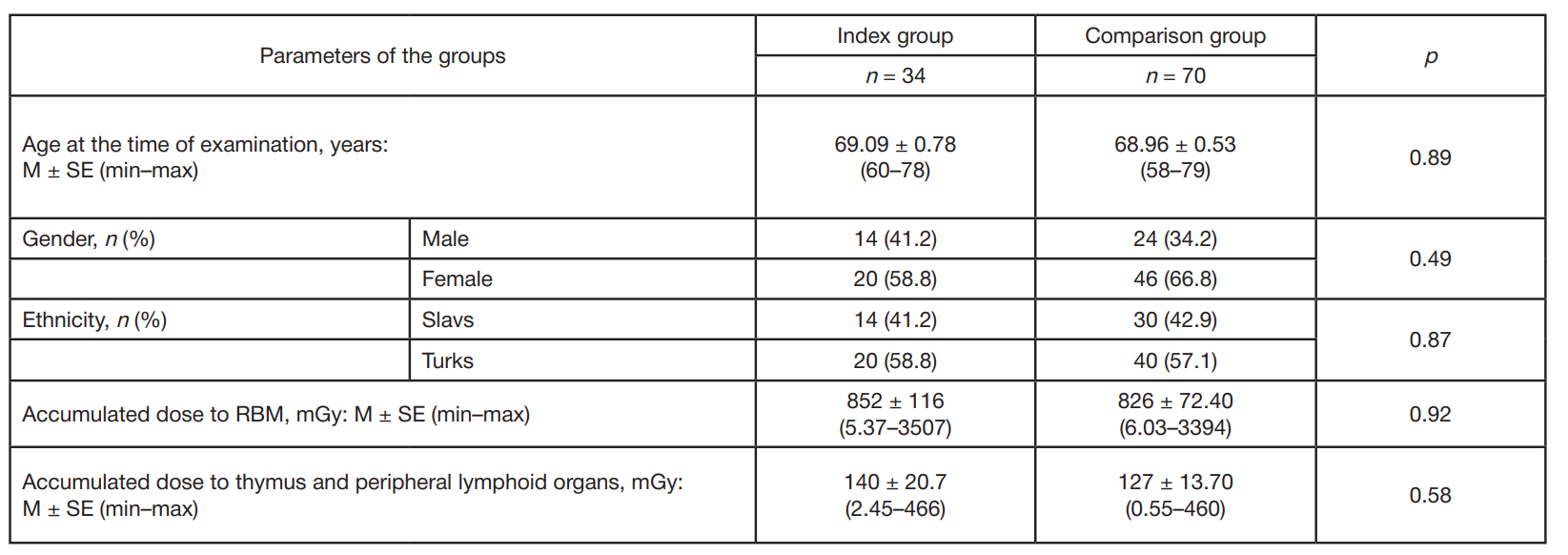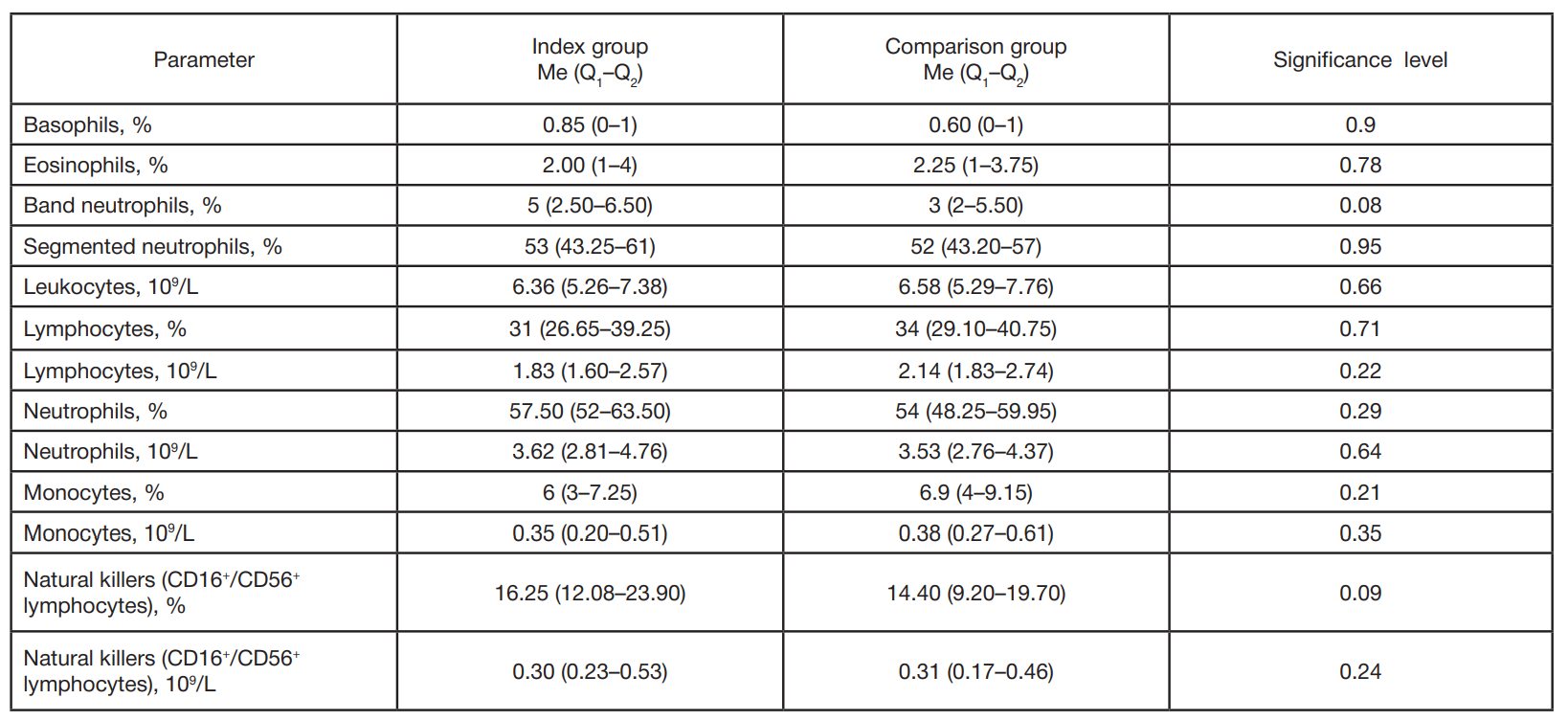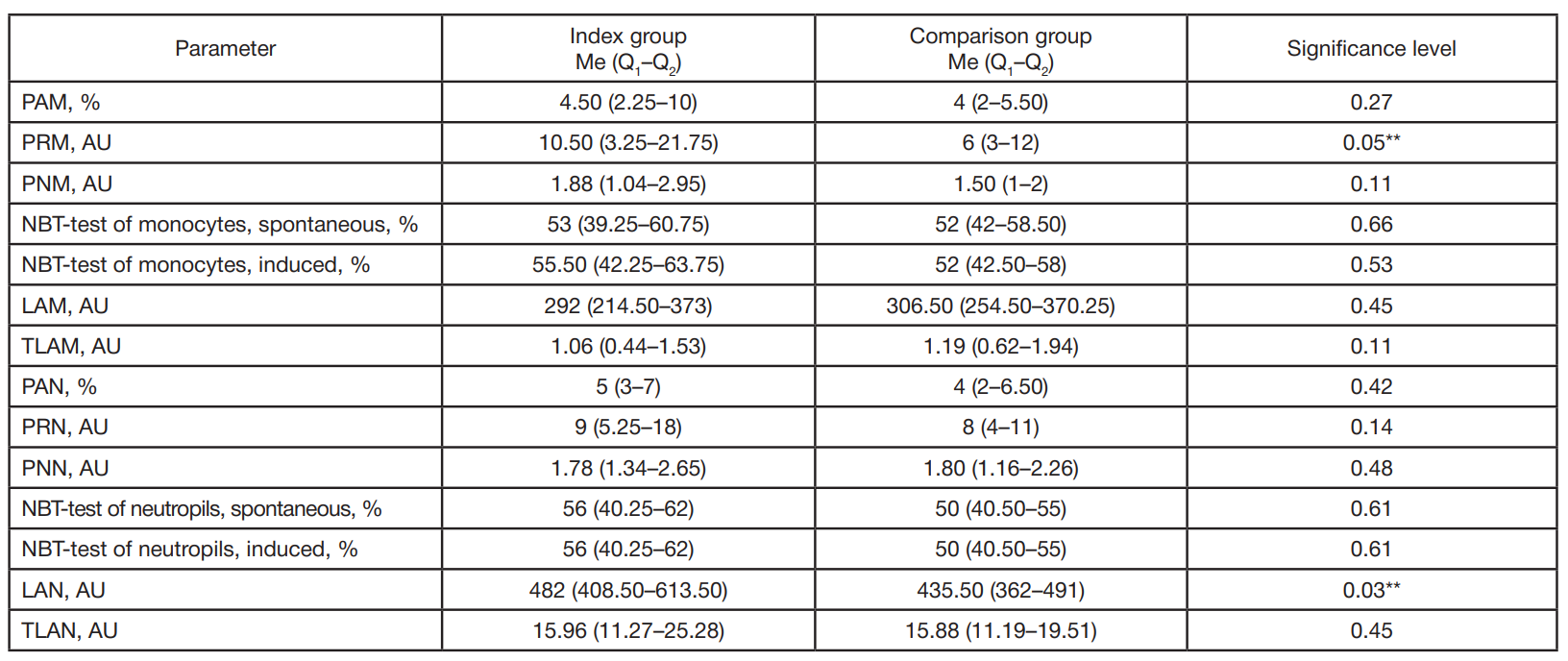
This article is an open access article distributed under the terms and conditions of the Creative Commons Attribution license (CC BY).
ORIGINAL RESEARCH
Status of factors of innate immunity in exposed people who subsequently developed cancer
1 Urals Research Center for Radiation Medicine of the Federal Medical Biological Agency, Chelyabinsk, Russia
2 Chelyabinsk State University, Chelyabinsk, Russia
3 South Ural State Medical University, Chelyabinsk, Russia
Correspondence should be addressed: Eugenia A. Blinova
Vorovsky, 68-А, Chelyabinsk, 454141, Russia; ur.mrcru@avonilb
Funding: the study was carried out with financial support from the Federal Medical Biological Agency of Russia within the framework of the Federal Target Program “Nuclear and Radiation Safety in 2016-2020 and until 2030” (State Contract № 11.313.21.2 of 15 June 2021).
Author contribution: Blinova EA — synthesis of primary data, analysis and discussion of the results, manuscript writing; Kotikova AI — statistical processing of primary data; Akleyev AA, Akleyev AV — study planning, manuscript editing, preparation of the final version of the article.
Compliance with ethical standards: the study was approved by the Ethics Committee of the Urals Research Center for Radiation Medicine (protocol № 4 of 23 August 2022). All patients submitted the informed consent to study participation.
